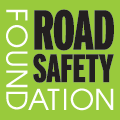GB EURORAP RESULTS 2009: MEASURING & MAPPING THE SAFETY OF BRITAIN’S MOTORWAYS AND A ROADS
- Major new analysis covering all Britain’s motorways and A-roads
- 60% of A-roads fail to rate as safe
- Analysis covers roads where deaths are concentrated: 50% of the deaths on just 10% of Britain’s network length
- Foundation to make progress on eliminating risky roads ‘transparent’
- Eight out of 10 highest risk sections in North England
- Safer road design is already saving lives
Single-carriageway A-roads are rated Britain’s most dangerous and 58 per cent of A-roads and 25 per cent of motorways fail to rate as safe, according to the latest EuroRAP survey by the Road Safety Foundation, which has tracked and classified the risk-level of roads for the last nine years. Download full report.
For the first time, the Road Safety Foundation’s annual study takes account of 45,000km of the country’s motorways and A-roads. Previous analysis covered 22,000km of motorways and primary routes.
Dr Joanne Hill, Director of the Road Safety Foundation, which carried out the research, says: “Overwhelmingly, the UK’s highest-risk roads are single-carriageways, and eight out of ten of the ‘persistently higher risk’ roads are in the North of England, notably around Buxton, Sheffield, Macclesfield and in Yorkshire and Humberside.
“Motorways and primary A-roads are the ones drivers use to travel longer journeys, such as for holidays or for long-distance haulage; but it is the busy non-primary routes – the ones that take volumes of traffic at all hours between towns and villages across Britain – that the new survey shows represent the highest risk, accounting for 62 per cent of all road deaths.”
A 12km section of road between Macclesfield and Buxton remains one of Britain’s most dangerous roads – with a dramatic 42 per cent increase in the number of fatal and serious collisions since last year’s research carried out by the Road Safety Foundation. Of the 27 fatal and serious accidents on this stretch of road, 18 involved motorcyclists but Cheshire County Council’s efforts to improve the safety of the road mean that when motorcyclists are excluded from the analysis, this stretch moves out of the highest risk category.
Overall, when motorcyclist collisions are removed from the league table, the 6.5km stretch of the A675 between Higher Walton and the M65 (J3) is Britain’s most dangerous road, with more than half of all fatal and serious collisions occurring at junctions.
The latest research shows that a 43km stretch of single carriageway on the A40 between Carmarthen and Llandovery is Britain’s most improved road. The previous level of 54 fatal and serious collisions have been cut by more than 80 per cent to ten, by introducing measures such as resurfacing and improvements to the design and layout of junctions. A further nine roads are rated among the most improved where, typically, resurfacing, changes to junction layout, better signing and white lines are bringing about more than 50 per cent reductions in fatal and serious accidents.
The pledge by the Road Safety Foundation to publish results across the A-road network was acknowledged by the government in its road safety strategy proposals for the next decade published two months ago.
Dr Joanne Hill says: “Over half Britain’s road deaths are concentrated on the 10 per cent of the network we have mapped. Despite significant advances in knowledge, engineering practice and road-safety countermeasures, 60 per cent of the A-road sections do not achieve even the top two safest risk bands that we would expect as the minimum safety level for these strategic roads; and a quarter of the motorway sections fall outside the safest risk band.”
“In the past, Authorities have successfully focused on removing isolated blackspots. Now they must switch their approach and target safety measures along the risky A-routes. We need safe villages, safe junctions, safe roadsides and safe overtaking.”
The Road Safety Foundation commits today to a decade of support for authorities and public to make Britain’s progress on removing risky roads ‘transparent’.
Dr Hill says: “We will be tracking and sharing with authorities and public, council by council, the progress that each is making in eliminating risky roads. The economic case for a decade of action is overwhelming with nearly one per cent of GDP lost in road crashes on this network. Deaths can be prevented by safe road design, low-cost but high-return measures which will significantly save lives and reduce accident levels. ”
The full risk map, showing risk on motorways and primary A-roads will be available in all Collins Road Atlases from early July 2009.

